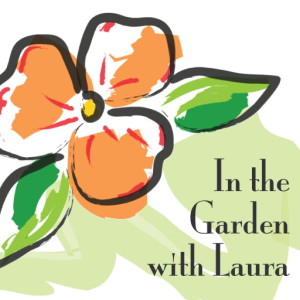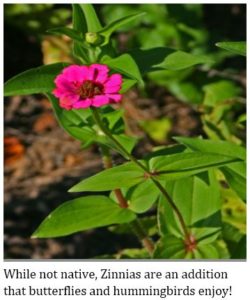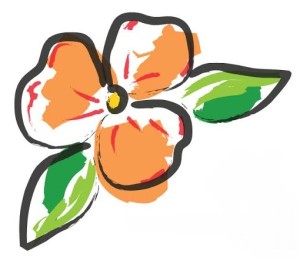 I love native plants. I love to grow them. I love to read about them. I love to preserve them and the wildlife they nourish.
I love native plants. I love to grow them. I love to read about them. I love to preserve them and the wildlife they nourish.
I first learned about native plants and their importance when I studied to become a Master Gardener. The more I learned, the more I wanted to grow and promote them. One book that had a strong influence on me was Designing Gardens with Flora of the American East by Carolyn Summers.
But I have a confession to make, my plants aren’t all native.
There are many reasons. We inherited some when we moved into our house. I b ought some before I knew better. I bought some when I should have known better.
ought some before I knew better. I bought some when I should have known better.
The result? A bit of a mix. I consider my backyard garden to be the “native” one but smack in the middle is a Japanese maple, Acer palmatum.
If I planted a tree now what would I plant? Maybe a Sourwood, Oxydendrum arboretum, or Fringe tree, Chionanthus virginicus, both lovely natives. The maple is very beautiful but I do sigh in spring when the garden blooms revealing a riot of colors that clash with the maple. Oh well. Lesson learned!
What are some of my other non-native beauties? Irises! Japanese irises, Iris ensata, came with the house. They are still going strong. Every time they bloom they charm me with their exquisite beauty. I also have added German irises, Iris germanica. These stunning and stately flowers will always have a home with me.
The 70+ Colorado blue spruce, Picea pungens, that lined our property when we moved in had to be removed due to age. I mourned their passing. The beautiful vista that appeared on their departure, however, was an unexpected pleasure. Now I look out at pastures and woods.
age. I mourned their passing. The beautiful vista that appeared on their departure, however, was an unexpected pleasure. Now I look out at pastures and woods.
A whole new line of plants – all native – are slowly growing to take their place.
Another favorite: azaleas. I lost some spectacular large, old non-native ones. Honeysuckles and other vines won the battle for their soul aided by my lack of knowledge. New native azaleas have been added, which is very exciting. I am keeping a close eye on any encroaching vines.
Some of the non-natives that had been added to the garden have passed away or quietly moved out while many natives have moved in. Several varieties of Asters, Phlox, and Coreopsis have joined Swamp weed, Asclepias incarnate, and Butterfly weed, Asclepias tuberosa. The local hummingbirds have visited the white Turtlehead plants, Chelone glabra, and the bees spend all day a t my Lavender Hyssop plant, Agastache foeniculum, to name a few of my garden’s native plants.
t my Lavender Hyssop plant, Agastache foeniculum, to name a few of my garden’s native plants.
I still have a number of non-native invasives. While we removed the Japanese barberry from the immediate yard, the birds carried seeds to our woods where they are happily growing to the distress of the wildlife there. If you have any I would suggest you seriously consider removing it. Take the plant to the dump so it does spread in your compost.
My yard is also plagued with Oriental bittersweet, Celastrus orbiculatus; Japanese honeysuckle, Lonicera japonica; English ivy, Hedera helix L.; Bush honeysuckle (various species); and other invasives. Despite having spent countless back-breaking hours battling these vile vines and weeds, they still thrive!
I should probably read Carolyn Summers’ book again for a little inspiration. And then go out and divide some of my native perennials and maybe remove one or two of those evil non-native invasives!
Happy gardening.
Note: Fall is a great time to plant spring blooming perennials, native bulbs (there are a few) as well as most shrubs and trees. Be sure to water since it has been dry!
You should do a background check on any new plant you are considering bringing home. If you are at the nursery, do a quick check on your phone. You don’t want to bring home a garden thug or neighborhood pest! A trustworthy nursery can also be a big help.
Laura
Here are some reliable online sites for information about plants:
U.S. Fish & Wildlife: Native Plants for Wildlife Habitat & Conservation Planting, Chesapeake Bay Watershed
https://www.nps.gov/plants/pubs/chesapeake/pdf/chesapeakenatives.pdf
University of Maryland Extension: A List of Native Plants
Missouri Botanical Garden: Plants of Merit (not all of these are native)
Missouri Botanical Garden: Plant Finder (not all of these are native)
http://www.missouribotanicalgarden.org/plantfinder/plantfindersearch.aspx
